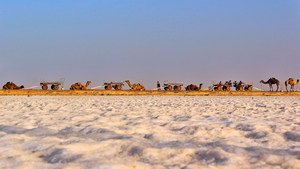I can feel the dryness on my face as soon as I land in Bhuj. The last rays of the sun are beating down on the brown and beige landscape, interrupted occasionally by patches of babul trees and bunny buffaloes. It’s a stark reminder of the place I am headed to Rann of Kutch, the bleakest, dustiest and hottest region in India. I am reminded of Saleem Sinai the protagonist of Salman Rushdie’s Midnight’s Children. But unlike Sinai who finds himself “anchored off the Rann of Kutch in a heat- soaked afternoon,” my home in Kutch is a luxury tent at the Rann Utsav!
The ravishing Rann
Rann of Kutch, which remains barren and lonely throughout the year, really comes to life during the three months of the Rann Utsav. Around 400 tents spring up at Tent City in the picturesque Dhordo village (declared the “Best Tourism Village” by the United Nations) every year between November and February. This is when the desert actually recedes, allowing itself to be tamed and made in to a showpiece.
“There is no place like Kutch in India. Where else can you see a white salt desert meet a glimmering sea while being looked upon by the mighty mountains,” remarks my guide Shankar Dheda, as we drive from the Tent City to Rann which stretches all the way from Gujarat’s Kutch district to Pakistan’s Sindh province covering around 30,000 square-kilometre.
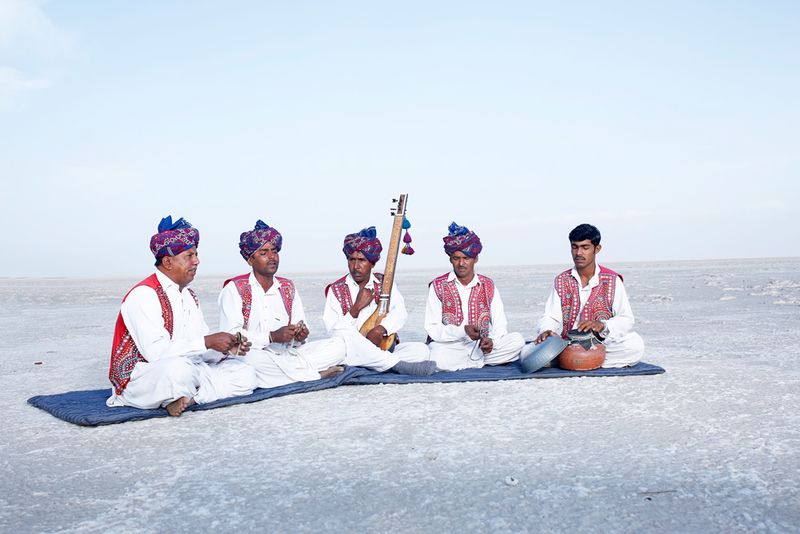
Also known as the Great Rann of Kutch, it adjoins the Little Rann of Kutch. Together they make up the world’s largest salt marsh. “The low lying mudflats of the white Rann fill up with rain water during the wet season (June-September) and then dry out the rest of the year. By December, when the rainwater evaporates the saline crust hardens to form the signature luminous white colour. By January the marsh is an unending white desert,” explains Dheda, who remembers the Rann covered with almost a foot of white, powdery sand unlike the thin crust of today.
Statistics aside, there’s nothing more surreal than watching a fiery sun being gobbled up by a bone dry salt dessert. The city lights shimmering in the distance on the other side makes for an equally stunning contrast. Sadly, I am not the only person watching this in peaceful isolation. From around 5pm, a large and cheerful crowd begins to gather on the Rann to watch the sunset.

The atmosphere is like a vibrant mela (village fair) with couples trying to get the perfect shot against the setting sun, locals renting colourful umbrellas and costumes, and camel carts and paramotoring enthusiasts shooting into the sky. By the way the pristine white sands of Rann was the backdrop for the ‘Saree Ke Fall Sa’ song featuring Sonakshi Sinha and Shahid Kapoor from the film R…Rajkumar!
Tip: The Rann looks best on a full moon night. The reflected glow of the moon on the white salt scape is a sight to behold. Time your visit for a full moon night. While at the Rann, skip the crowd and walk further ahead to get unsoiled white salts (devoid of foot prints and tyre marks). Sunsets are the busiest time on the Rann. But the sunrise is equally mesmerising.

A cultural postcard
After ticking off the much-anticipated Rann of Kutch off my bucket list, I head to my home for the next three nights. As I unzip the tent, a cozy bedroom decked out with a four poster bed and pretty lamp shades meet my eyes. There’s also a living room perfect for reading, game-playing or cooling off after too much sun. The ensuite bathroom to my delight is spacious. There’s no denying the luxury of a shower that packs the force of a fireman’s hose, or a bath almost big enough to practice your breaststroke in. Thankfully my tent has both.
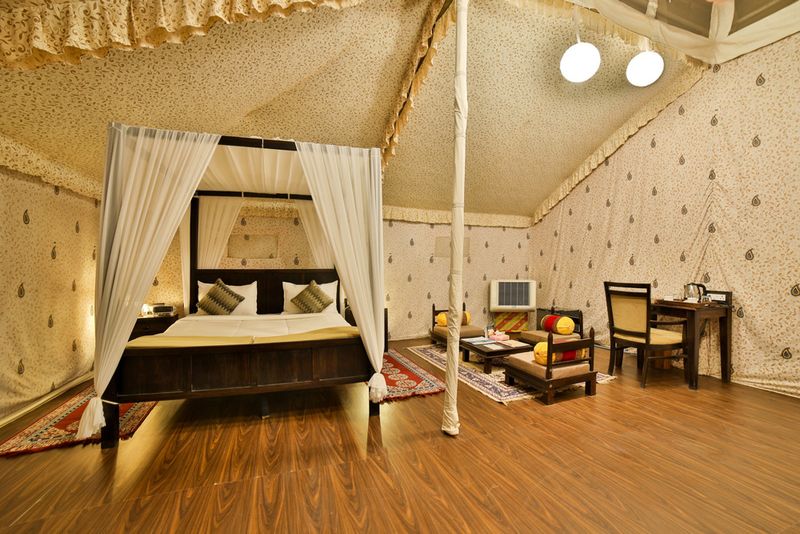
Nights at the Tent City are marked by cultural programmes. On the first night, I am treated to a vivacious garba set to a scintillating live band. There’s also an action filled ‘Dhamal’ dance performance by the Siddis—a major tribal community of Kutch. Interestingly, most Siddis are believed to be the descendants of slaves, sailors, servants and merchants from the Bantu speaking parts of East Africa who arrived and became residents of the subcontinent during the 1200-1900 CE period.
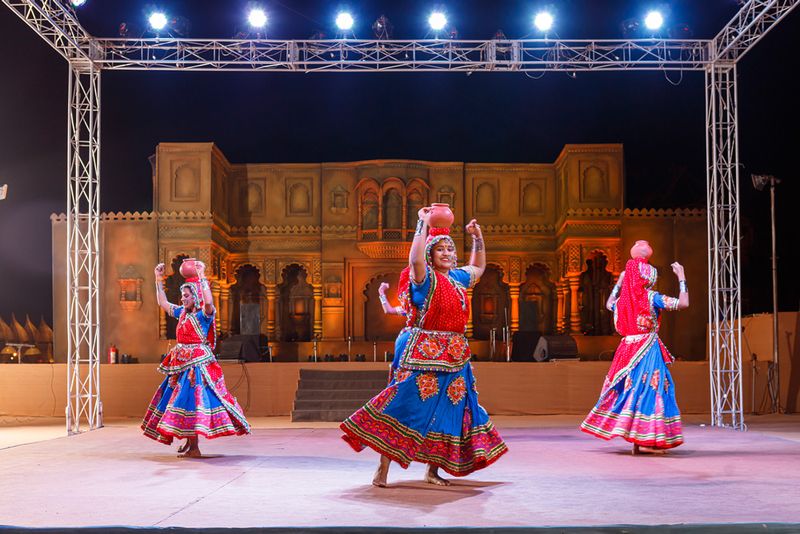
In fact, a significant number of Siddis arrived in the area during the 17th century after being sold by Portuguese slave dealers to the local princes. In the olden days, the Dhamal dance was performed by Siddis after returning from a successful hunting expedition. In the action-packed performance at the Tent City, Siddis throw coconuts in the air which fall on their heads and break into pieces, and walk barefoot on embers. All this to the soundtrack of a thunderous applause from the audience.
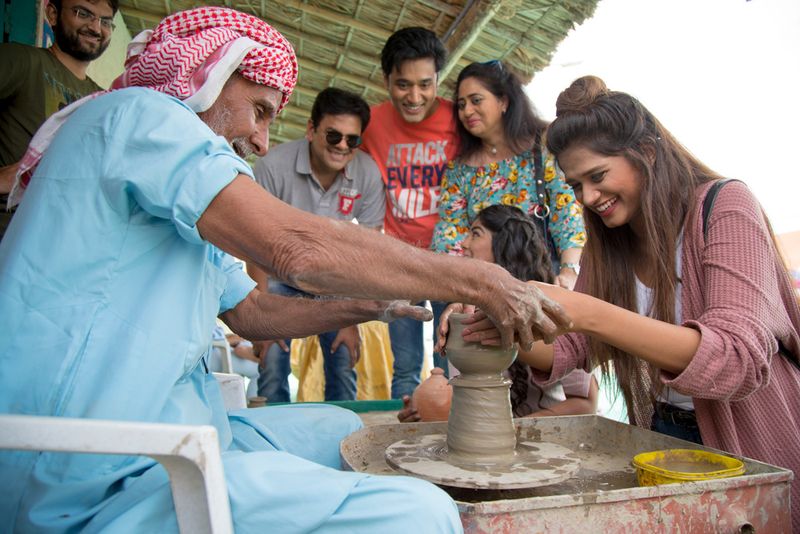

There’s never a dull moment in Tent City. My days are filled with watching skilled craftsmen turn pieces of leather into exquisite handbags, clay into beautiful pieces of pottery, deck up sarees with Ajrakh block prints, and women fill up skirts with mirror embroideries. Art flows through the veins of the Kutchis and it’s all very evident here. Stalls selling patch work quilts, batik kurtas and blouses, carved wooden items and engraved silver jewellery crowd the colourful bazaars. There’s also an art gallery and spa to indulge in. In the evenings busloads of people are transported to the Rann to witness the sunset, enjoy camel safari, paramotoring, and ATV rides. On the return a buffet of piping hot Gujarati delicacies are waiting to be devoured.
It’s no secret that Gujaratis are foodies but within them, the Kutchis are even more so. The cuisine of Kutch is an off-shoot of Gujarat but with its own unique flavour. Meals are lavish affairs with a fleet of dishes that include the mildly spicy Kutchi kadhi, batata nu shaak, sev tamatar nu shaak, pulaos, undhiyo, and ghee-laden bajra rotis. Tea time snacks include the softest of dhoklas, crunchiest kachoris, and sweet spicy pomegranate-studded Kutchi dabeli. The international selection includes pasta, pizza and Mexican dishes.
More than the Rann
While the rugged landscape of Kutch with its poor dodgy phone connectivity offers a peaceful retreat to gobble up a book, reflect, or simply tune out— there’s also a chance to amp up the adrenalin. The Tent City is home to pulse racing zip lining, paintball, archery, and rock climbing. Not a thrill seeker, I choose the luxury of star gazing with a piping hot cup of adrak chai for company.
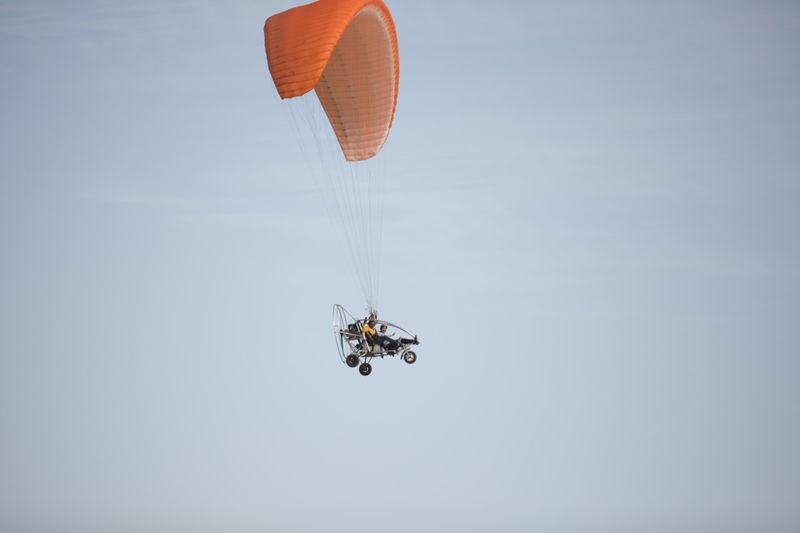
Day trips from the Tent City take me to the Harappan site of Dholavira. The drive itself is fascinating—dotted as it is with flamingos, blindingly beautiful bungas (white washed mud houses decorated with murals and mirror work) and mooing buffalos. Kalo Dungar (black hill in Gujarati) is another interesting site. Perched at 462 m at the edge of Kutch, it comes with jaw dropping views of the Rann and the Indo-Pak border. Beach lovers can also make a trip to Mandvi to enjoy the serene coastline and visit the splendid Jay Vilas Palace where Bollywood blockbuster Hum Dil De Chuke Sanam was shot.
As I head back to the airport after three enthralling days in Kutch, I am reminded of Amitabh Bachchan’s famous words “Kutch nahin dekha, toh kuch nahin dekha.” Truer words have never been spoken. Kutch is a land of living history that needs to be seen.
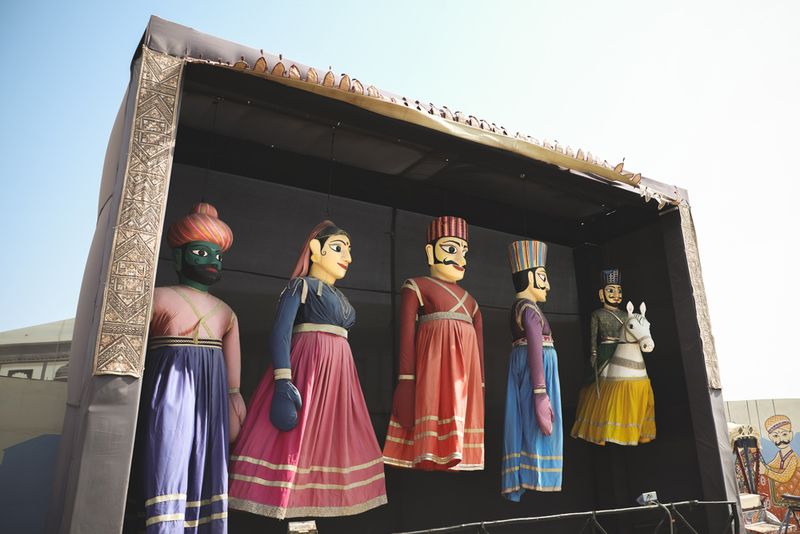
Things to know:
Rann Utsav is an annual event celebrated in the winters for nearly 100 days. The ongoing edition of the festival ends on February 25, 2024. Full moon and dark moon days are the most sought after for star gazing and astro photography lovers.
January 24-25-26, 2024: Full Moon
February 9, 2024: Dark Moon
February 23-24-25, 2024: Full Moon
How to reach Rann
The nearest airport to Rann Tent City is in Bhuj which is 86 km away. Bhuj also has a railway station which connects it to most regions in India. The Rann Utsav Tent City’s pick-up/drop facility is available at Bhuj Railway Station and airport at designated times. Please check www.rannutsav.net for more details.
How many days are enough: 3 nights and 4 days are good to experience the festival and the attractions around Kutch.
Tent rates: INR 5,500 per person per night to INR 25,000 (inclusive of meals).



